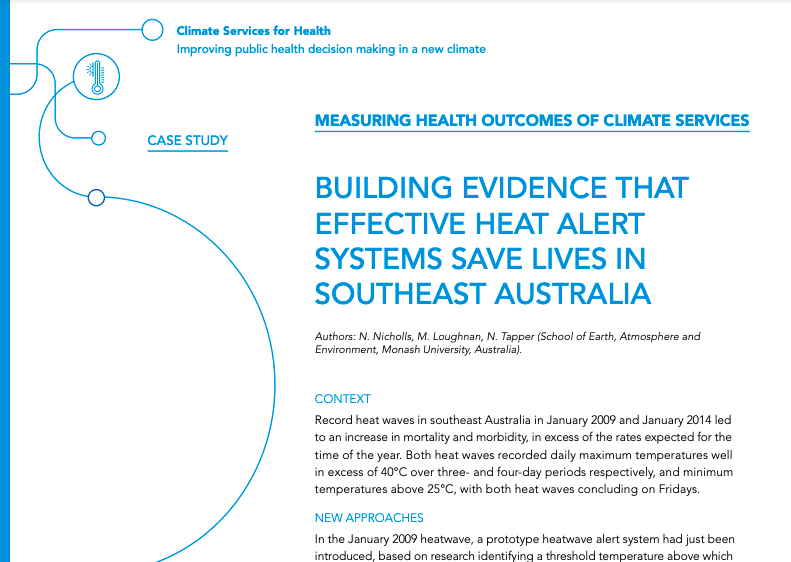
Explore health-relevant side events, news and resources from the 2025 UN Climate Conference.
Health at COP30 >Measuring how well a climate service meets its intended goal and providing feedback on benefits, impacts, and user-satisfaction is extremely important to maintain and improve future services. Early in the development processes all stakeholders should be involved in discussing and agreeing on how to measure success and the methodologies that will be used for monitoring progress and collecting key information. Open discussion can help to ensure that all stakeholders participate in and become aware of the expected achievements.
An evaluation commonly assesses three aspects of a given climate service:
Other factors related to process undertaken and the adequacy of the enabling environment or capacity are also frequently measured, including community perceptions, institutional capacity and partnership efficacy, ethical dilemmas encountered, etc.
Evaluation allows for the iterative feedback and improvement of the climate services, notably to generate evidence that can increase the level of trust of health decision-makers in the service, and identify good practices as well as limitations, barriers, and threats. Evaluation is a fundamental exercise that requires planning and coordination.
When done properly, evaluation can reveal whether activities were sufficient and balanced to meet the service’s goals. Active and transparent participation of all stakeholders is important to identify service strengths and weaknesses, detect potential risks to service provision or application, and to define strategies to improve the service. The results of an evaluation will, in turn, define the needs for specific activities that can reinforce and improve the application and effective functioning of the service.
Evaluation approaches of climate products and services are often adapted from those used in public health to measure health system performance or health intervention efficacy. Important outcomes and impacts to evaluate include: